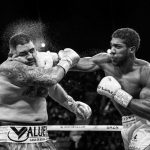Mourning sports icons like Kobe Bryant is complex
The death of the basketball icon led to an outpouring of love for a man who transcended the sport. But when we mourn him, we must mourn the complete Kobe Bryant, with all his triumphs and flaws.
Author:
20 February 2020

A profound sense of heaviness hung over the 2020 Grammy awards. The Los Angeles’ Staples Center, which had been transformed into a glittering ball for the musical nominees who had best represented the American cultural empire, gathered in shimmery peplums, fringe-suits and whimsical gowns.
At the start of the awards, musician and host Alicia Keys addressed the heaviness hanging in the air. “We never imagined in a million years that we would have to start the show like this,” she said solemnly, “because earlier today Los Angeles, America and the whole wide world lost a hero.”
Keys continued in a reverential tone. “We are standing here heartbroken, in the house that Kobe Bryant built.”
News of Bryant’s untimely death in a helicopter crash had been announced that Sunday morning. Reports earlier in the day had indicated that the retired 41-year-old National Basketball Association (NBA) star and his daughter Gianna were among the nine people travelling in the helicopter that crashed near Calabasas, California.
Back at the Staples Center, Keys offered a tender smoky vocal as tribute:
It’s so hard to say goodbye to what we had
The good times that made us laugh outweigh the bad
Keys’ rendition was a tender reimagining of the Motown classic penned by Freddie Perren and Christine Yarian for the 1975 film Cooley High. Hers was a tribute to an old friend rather than melancholic longing for a past love. The song was made famous by the a capella stylings of R&B boy band Boys II Men, who later joined Keys in harmony as seasoned men on the Grammy stage.
It was not a perfectly rehearsed performance, but it was heartfelt. As the cameras panned across the faces of the musical celebrities in the audience, it was clear that the tribute was received with the profound reverence with which it was delivered.
The superstar emerges
Bryant is considered one of the greatest athletes of all time as a result of his success with the Los Angeles Lakers, which saw him win five rings with the franchise. Bryant earned himself a reputation as a high flyer and fan favourite when he won the 1997 Slam Dunk Contest as an 18-year-old.
In his 2014 profile of Bryant, writer Ben McGrath chronicled the life of a child star hurtling towards becoming a basketball idol.
McGrath writes that, “In 1996, fourteen years before LeBron James earned infamy by announcing, ‘I’m going to take my talents to South Beach,’ young Kobe stroked his chin theatrically for the cameras in the gymnasium at Lower Merion High School, outside Philadelphia. ‘I’ve decided to skip college and take my talent to the NBA,’ he said, with a pair of shades perched above his brow and a thin moustache sprouting above his upper lip.”
McGrath continues. “He had reason to be cocky: Lower Merion’s games attracted ticket scalpers. A few weeks later, he took the singer Brandy to his senior prom. He needed his parents to cosign his first contract with the Los Angeles Lakers, that summer, and he was still living with them when, the following February, he won the slam-dunk contest at the NBA All-Star weekend.”
Later on, Bryant and NBA icon Shaquille O’Neal would lead the Lakers to three consecutive NBA championships from 2000 to 2002. Bryant’s star was soaring and unblemished.
Until July of 2003.
An inconvenient reality
In early July, media reports confirmed that Bryant had been arrested by the sheriff’s office in Eagle, Colorado, in connection with an investigation into a sexual assault complaint filed by a 19-year-old hotel employee.
During the July 2003 interview with the primary investigators, Bryant denied claims that he had sex with his accuser. The woman who worked at the hotel where Bryant was staying was rendered a liar by Bryant’s first account. When the officers told Bryant that she had taken an exam that yielded physical evidence such as semen, Bryant changed his account of the story.
He admitted to having sexual intercourse with her and told the investigators that it was consensual.
Related article:
Bruises were found on the neck of the complainant. Bryant admitted to “strangling” her during the encounter, stating that he held her “from the back, around her neck” and that strangulation during sex was simply his thing. He told the officers that he had a pattern of strangling another sex partner during their sexual encounters. The sex partner Bryant was referring to was not his wife and partner, Vanessa Bryant.
When asked how hard he was holding on to her neck, Bryant stated, “My hands are strong, I don’t know.” He went on to say that he had assumed consent because of the accuser’s body language.
Bryant had confessed to a simple, chilling truth. An inconvenient one as it would cost him major sponsorships down the line, but a truth nonetheless.
False truths, and the boys and men they create
Truth, for some, can be understood as a relative concept. Truths can be shifted, distorted and placed strategically to create new narratives. Fabrications with glimpses of truth.
The idea of masculinity, for instance, is often conflated with the dangerous and debilitating mistruths that accompany toxic masculinity.
In Heavy: An American Memoir, African American author and academic Kiese Laymon writes a powerful account, among other subject matter, of the disquieting ways in which boyhood is tethered together.
He opens his book on a meditation on truth in a chapter entitled “BEEN”.
He writes, “I did not want to write to you. I wanted to write a lie. I did not want to write honestly about black lies, black thighs, black loves, black laughs, black addictions, black stretch marks, black dollars, black words, black abuses, black blues, black belly buttons, black wins, black beens, black bends, black consent, black parents or black children. I did not want to write about us. I wanted to write an American memoir.”
Those of us who know some of the American story know that it is a heroic story. A story of conquest. A story filled with wins, dreams and possibility. Like all good stories, they are passed down from generation to generation. Fresh ears waiting for the tales from aged lips.
Related article:
Beneath the story of the great American nation, however, is a global story. An unexceptional story of violence. It is a story of men pillaging, breaking and raping without remorse or consequence.
Later on in the book, Laymon reflects on his own stories and the ways in which they shaped his childhood. After being indirectly party to the gang rape of his friend Layla at a house party when they were children, he writes, “My body knew things my mouth and my mind couldn’t, or maybe wouldn’t, express.
“It knew that all over my neighbourhood, boys were trained to harm girls in ways girls could never harm boys, straight kids were trained to harm queer kids in ways queer kids could never harm straight kids, men were trained to harm women in ways women could never harm men, parents were trained to harm children in ways children would never harm parents, babysitters were trained to harm kids in ways kids could never harm babysitters. My body knew white folk were trained to harm us in ways we could never harm them.”
Incomplete memorialisations
As news of Bryant’s death emerged, the stories that played out globally were coloured by tragedy. It was indeed tragic that a symbol of athletic excellence had lost his life. It was heart-wrenching that this had happened while he was with his daughter, who promised to be equally capable and equally athletic.
For many sports fanatics across the world, the story was unimaginable. A signifier of excellence had been lost to a seemingly senseless tragedy. A signifier of black excellence had been extricated from this Earth and so the memorialisations began. Unceasingly and continuingly.
This loss was and continues to be absolute and deeply personal.
As Laymon shows in his tenderly complicated 2013 ESPN piece, the problem with hating Kobe is that “the athletes we love and hate cultivate their work in a hyper-mediated spectacle that often renders their work, their skills, their likeness, their successes and their failures ours.
“ESPN, fantasy leagues and social media bring us closer to our players, but that spectacular one-sided relationship obscures the fact that, while players we love and hate are the best in the world at their jobs, most of us have no idea what it’s like to be the best in the world at anything.”
Related article:
Bryant was remembered as a fallen angel. His memory was deified consistently and continuously until The Washington Post newspaper reporter Felicia Sonmez tweeted a 2016 article from news and opinon website The Daily Beast with the headline, “Kobe Bryant’s disturbing rape case: The DNA evidence, the accuser’s story and the half confession”.
Sonmez’s tweet gained traction on twitter and a different outpouring of stories emerged on the internet about the memorialisation of Bryant.
Survivors of rape and sexual assault signalled their discomfort or the ways in which it is deeply triggering for them to see the face of a man who was accused of sexual assault being lauded and celebrated.
These voices were often drowned out by those who came to the defence of Bryant’s hagiography. Outrage poured out from those who foregrounded their “right” to celebrate their hero as an uncomplicated figure of excellence, of discipline and perseverance.
Related article:
Some responded with the idea that “feminists sought to strategically silence their abilities to mourn the black life of an excellent ball player”.
One keyboard warrior exclaimed “@washingtonpost, you need to fire Felica Sonmez asap! Her tweets about Kobe Bryant after he and other victims died in a tragic helicopter crash are beyond insensitive. They are cold hearted and show no respect for his family/friends. Parents and children died today for Christ sake!”
One of The Washington Post’s managing editors, Tracy Grant, told broadcast television network NBC News that Sonmez had been placed on administrative leave while The Post reviewed if tweets about the death of Bryant violated its newsroom’s social media policy.
“The tweets displayed poor judgement that undermined the work of her colleagues,” Grant said.
Calls were later made to reinstate Sonmez.
Critiquing the lynch mob
On 4 February, television and radio network CBS posted a clip of television personality and journalist Gayle King’s interview with Women’s National Basketball Association star Lisa Leslie, a longtime friend of Bryant.
Essence magazine reporter Allison McGevna writes that “in the clip, taken from a longer interview about Bryant’s legacy, King pressed Leslie on whether the 2003 rape accusations, later dropped in criminal court and settled in a civil case, tainted the way that Bryant would be remembered. For Leslie, it was clearly a painful and difficult moment as she discussed her late friend just days after his passing. For King, it would soon become a disaster.”
After the clip was posted, a twitter storm started brewing in what McGevna refers to as a “massive drag of King through the internet streets”.
“LeBron James framed his by calling for the protection of Lisa Leslie, no doubt at the expense of King. Snoop Dogg was more graphic with his, calling her a funky dog head bitch who should watch herself before ‘we come get you’. Ari Lennox, a victim of misogynoir (misogyny directed at black women) herself just weeks ago, shifted to being an aggressor without hesitation, labelling King a ‘coon’ in a profanity-laced tirade. Bill Cosby, serving time in prison after being convicted of raping and drugging women, took to twitter to drag King – or someone from his camp did it in his name.”
There are clear parallels in the treatment of Sonmez and King. The treatment of both women in patriachal defence of a man show a clear debilitating hatred of women, queer and transgender people by extension. It is a debilitating entitlement to misogyny and the institutional and political culture of violence that mediates the lives of women the world over.
Related article:
It is the inability to “see” and comprehend women as legitimate human beings who could potentially feel hurt or have their dignity and claim to life threatened through the actions of heterosexual men, the world over.
These incomplete memorialisations that ask for us to render Bryant’s legacy as saintly are clear fabrications. Clear, deliberate lies in the service of patriarchy. Lies that continuously seek to render the suffering of women, femmes and transwomen unknowable and illegitimate.
They are simply lies.
In the words of Laymon, it is “titillating” lies. A lie “that wants us dead and dishonest”.
The personal is political
The personal is political is a fairly popular dictum in feminist circles. It is the acknowledgment that the experiences of women, queer and transgender people are not aberrations in the nexus of white supremacist normativity. Put differently, the intimate and personal details in our lives are connected to a systemic order that often is anti-black, anti-women, anti-queer, anti-trans and at its heart, anti-human.
The story of Kobe Bryant, as news of any pop cultural event across the world, has come into our lives in intimate and deliberate ways. The story of Bryant shows up on our televisions at home. It pops up on our cellphone as we scroll through our timelines. The story as an unfolding event is always personal and immediate.
Related article:
It is for this reason that we need to take the implications of this story seriously.
This story also points us to South African realities. The war against women’s bodies and queer people. The neverending epoch of gender-based violence. It is, quite literally, the fabric on to which the South African state was stitched. As South African poet and author Maneo Mohale writes in their poem Focus Rising:
In ink, as in rhetoric
War is a metaphor reserved for women, drugs and terror
Mistakenly defanged
Invoked on anniversaries of violence
As if it is only the danger on the page
Or in the air
Spat at us like teeth
War hides in the tendril and the blue helmet
Under the silken tie and coded sanction,
In the shutter and the shuddering pact
Between the optical and the chemical and the mechanical
For this reason, we should abandon half-truths and fabrications and reckon with the complexity of mourning celebrated figures like Bryant.
The complexity in mourning
We should mourn the tragedy that ended Bryant’s life. We should mourn his life. Cry and weep. We would not be empathetic or humane if we did not. A father lost his life in the presence of his daughter, who has also lost hers.
But we should also mourn the dignity of the young woman Bryant is accused of sexually assaulting. We should mourn the real threat to her dignity. At the time she was called a whore, a gold-digger and a chancer after she had been brutalised.
She asked to be believed and was systematically told no. Told her story was too inconvenient in the mythmaking around an extraordinary sports hero. We should mourn a system that continues to value the lives of men over trans, queer and cis women. Of course we should.
We must also reckon with the fact that mourning is complicated.






